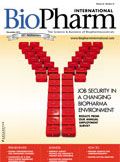When Disaster Strikes at Home
Keeping tabs on crucial medicines should be part of consumers' and manufacturers' emergency-preparedness plans.
The editorial offices of BioPharm International are based in New Jersey, so when Hurricane Sandy hit last month, we were all affected. Flooding and high winds destroyed many coastline homes along with well-known destinations across Atlantic City, the Jersey Shore, and the neighboring Manhattan boroughs. Suburban communities and businesses (including many US biopharma manufacturing headquarters) across the state were without power for days and schools were shutdown for a week or more in several counties. President Obama declared the state, along with New York, a major disaster area. The entire ordeal was quite surreal, and our team considers ourselves to be lucky that we made it through unscathed. Our thoughts go out to those who are still recovering from the storm and trying to get back to normal.

Angie Drakulich
Many common questions arose during the hurricane and its aftermath, including how long food products could be considered safe to eat without refrigeration and where the closest open gas station was to refill generators. Pertaining to our industry were questions about medications that required refrigeration (primarily injectables and liquids), prescriptions that needed refilling (many doctors' offices and drugstores were closed due to flooding and power outages), and drug products that had gotten wet or been lost in the storm.
Fortunately, FDA has a consumer webpage devoted to drug safety after a natural disaster, whether it be exposure to fire, unsafe water (key for drugs that have to be reconstituted), or lack of refrigeration (www.fda.gov/Drugs/EmergencyPreparedness/ucm085200.htm). Certain life-saving drugs (e.g., insulin) can be used even if not cold as long as they are not past their expiration date, says the agency webpage. There is also FDA information on medical devices and their safety during a crisis, and even an agency guidance aimed at sales representatives on how to deal with lost or stolen drug samples in the aftermath of a disaster (looting in general was quite prevalent after Hurricane Sandy).
There are also some rules of thumb to follow in any emergency-preparedness plan. Many patient advocates recommend having on hand a 30-day supply of regularly used medicines (both prescription and over the counter), as well as extra quantities of devices needed to administer medications. But as a consumer, it seems there should be even more information available for those unfortunate times when something out of human control affects the medications we need. As an asthmatic, for example, I was concerned about my inhaler's pending expiration date and not being able to get a refill without having to go the emergency room, which by the way, would have been impossible given that the end of my street had a 60-foot tree and power lines across it.
Drug labels are already quite lengthy, but it may be worthwhile to add a few more details. For instance, language may focus on how long a cold-chain medicine can go without refrigeration, or how long a drug exposed to excessive heat can be considered safe, or the reasons behind drug-product expiration dates. Some of these details may be provided in medication guides that come with drug products, but even those of us in the pharma industry know that the majority of end users do not read those packets in full or keep them. This is probably an area where FDA and pharmacists can do a better job educating consumers about the importance of medication guides.
Another piece of information worth including on labels may be where to find information during emergency situations. As so many discovered during Hurricane Sandy, we rely heavily on technology to get our information. Smart phones, in particular, became indisposable in the aftermath of the storm when power outages held hostage traditional television, phone, and Internet access. Pharma companies could consider, for example, having active Twitter feeds during emergencies so that people can still access crucial information.
Various disasters and crises are bound to affect the global community in the future. Now is the time to think about the crucial information we will need to have on hand—and attached to our medications—when that next time strikes.
Angie Drakulich is the editorial director of BioPharm International.
